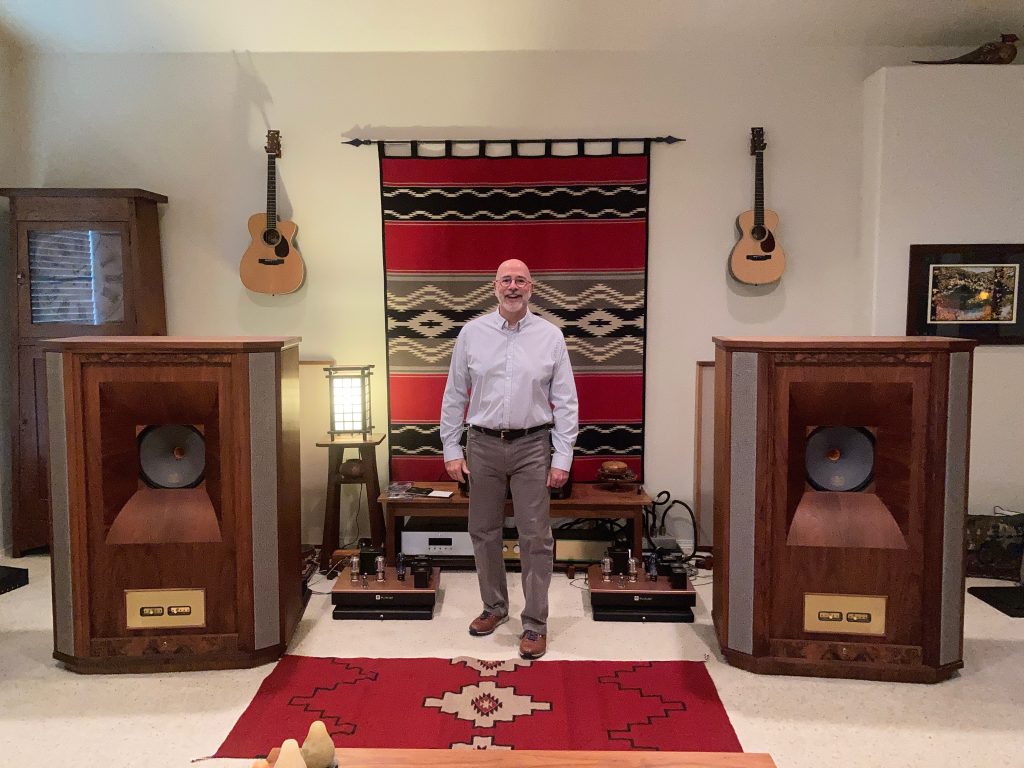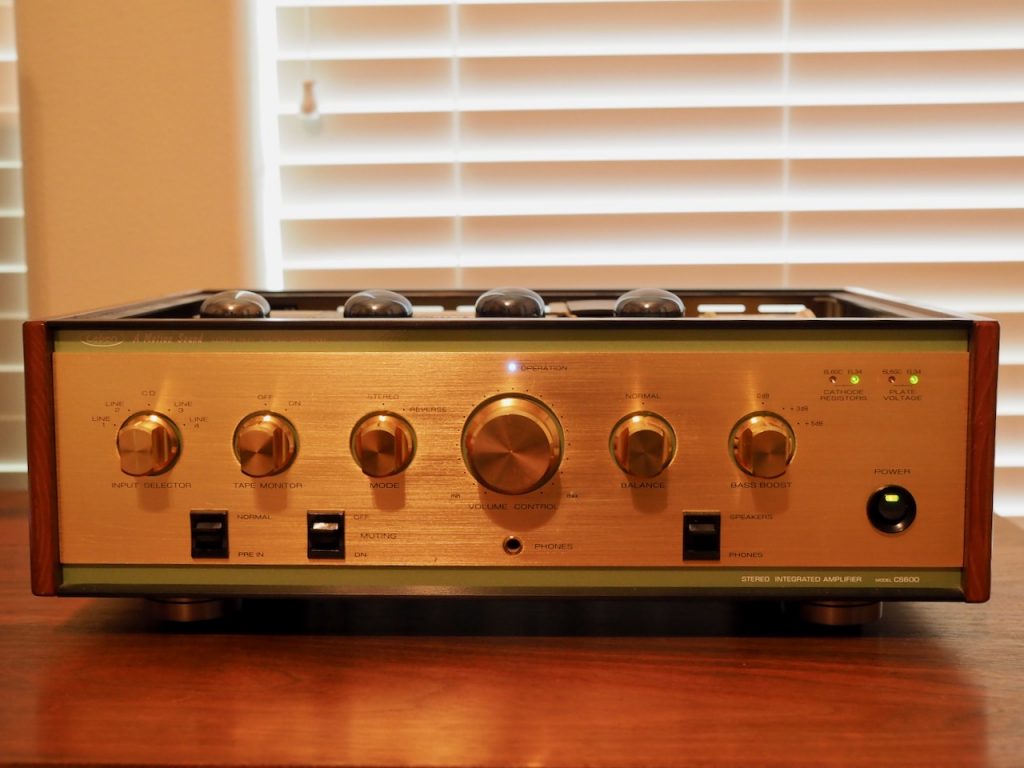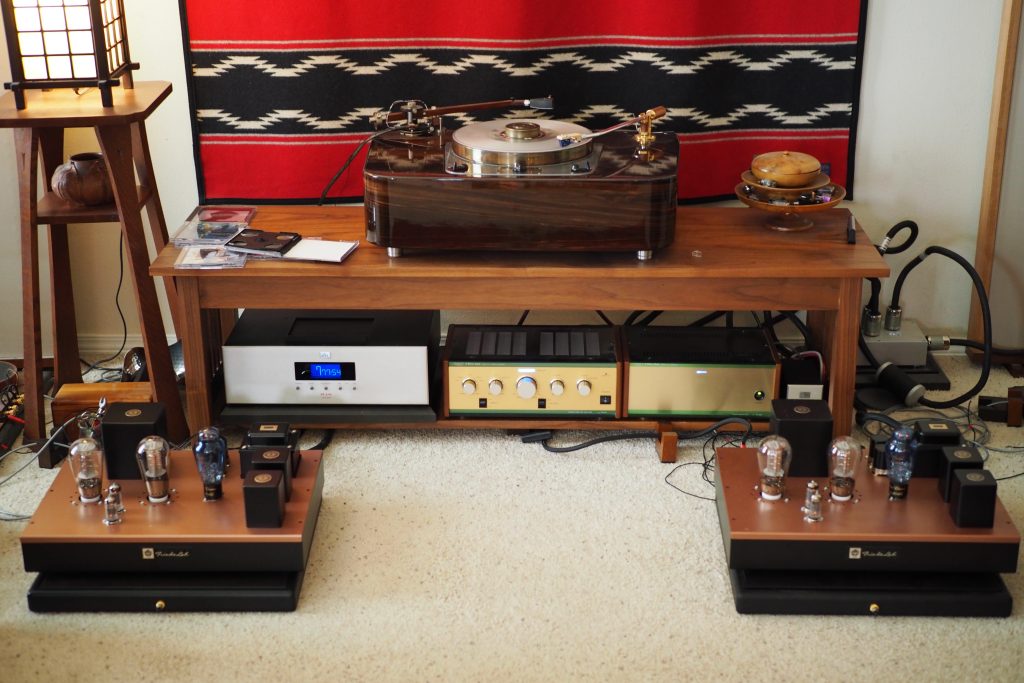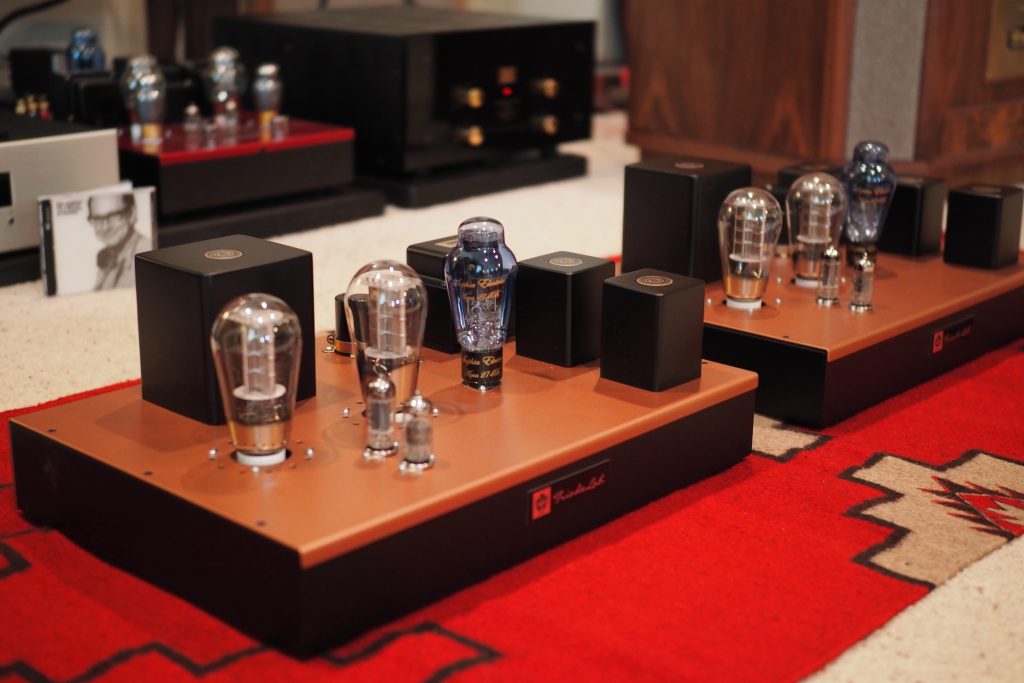Greetings friends, welcome to Jeff's Place, and I hope that 2022 is treating you well so far.

I just happened to notice that today is the third anniversary of Jeff's Place at Positive Feedback!
Woo-hoo! 😃
Many thanks to Dave Clark and Dr. David Robinson for offering to host Jeff's Place at Positive Feedback. It's been terrific to be with Dave and David, first as an audio writer, then a Senior Associate Editor, and now as a blogger with Jeff's Place at Positive Feedback.
It's been approximately twelve years ago that I started writing my Jeff's Place blog. I still really enjoy telling you about my audio adventures with audio components for review at Positive Feedback, DIY project articles, articles about vintage hifi kit, insights from industry insiders, the music I'm enjoying, and other stuff!
One of the things I plan on doing more of in the future is longterm reports on components that I have reviewed for Positive Feedback, as I believe that a longterm view will provide additional insights that comes with listening to components for an extended period.
Most of the time that extended period of use offers additional positive insights into the product, and how to get the most out of it, as with my Tannoy Westminster Royal SE loudspeakers.

Tannoy Westminster Royal SE loudspeakers with Duelund CAST crossovers.
My first long-term report was The Long-Term Report: Twelve Years with the Tannoy Westminster Royal Special Edition Loudspeakers! that I wrote last year (HERE).
My Westminsters, with their Duelund CAST crossovers, have stood the test of time. I swear they have continued to improve over the years that I've owned them, and I am more impressed with them than ever.
There are limitations of course to longterm reports, as it is not always possible for manufacturers to leave components with me for an extended period. However, it can provide useful insights when they do leave a component with me for a longer period of time, and of course it provides the manufacturer long-term visibility for their products as I continue to talk about them in my articles.
Hint: A component being here for an extended period also means I really like it and want to continue to use it (or I've bought it outright as with my Westminsters), as the ones that don't measure up don't stay around for long.

Almarro A205A Mk1 integrated amplifier - dead.
I suppose there's also some risk with the long-term view as well, as occasionally that will mean that something that is less than desirable will come to light, as with the Almarro A205A single-ended-pentode integrated amplifier, where an output transformer failed due to an internal short.
The A205A was not repairable at a price commensurate with the value of the amplifier, due to Almarro being out of business, and their transformers no longer being available. The A205A was a fantastic sounding 5-watt amplifier, and I really loved it. It was absolute magic when powering my vintage Altec 832A Corona loudspeakers, so I was really sorry to see its demise.
There's a lesson-learned experience there with the Almarro: If a component uses proprietary parts, or vintage parts where there are no modern replacements for them, if it fails and you can't get the parts to keep it running you are screwed.

Vintage McIntosh MC30 monaural amplifiers, and vintage McIntosh MX110Z preamplifier.
Some vintage components are still highly regarded today for their superior performance, like designs from McIntosh and Marantz from the Golden Age of audio, and even 50 years later these components can be refreshed with readily available components for decades more of enjoyment.
Some designs are just so good they possess near eternal life as audio components, like the vintage McIntosh MC30 monaural amplifiers and MX110Z preamplifier in the photo above.
So that's something to keep in mind when buying a component ... will there be support for a component in the future? Will I be able to buy replacement parts, and if it is a vacuum tube component, will I still be able to buy vacuum tubes for it?

My Leben CS-600 integrated amplifier.
Those are questions that I am addressing more and more in reviews these days, and if it is the case I will warn you of the potential for risk.
For example, my Leben CS-600 integrated amplifier impressed me so much that I bought it after the review, well over a decade ago now. The Leben CS-600 has been absolutely trouble-free over that time, but it is worth noting that Leben likes to build components with NOS vacuum tubes that there are no currently produced substitutions for, like the 6CS7 used in the first-stage of amplification, or the 6CJ3 rectifier.
When that is the case I will tell you, and recommend that you stock up on those tubes for the long haul. That's what I did with the Leben CS-600. I bought enough 6CS7s and 6CJ3 tubes to last me the rest of my days (I hope).
I believe in longterm learning for one's life, and I continue to learn something new about audio and music every day, and as I do, I like to tell you about it.
Like how important Humankind's entire recorded music canon is to our musical enjoyment, and for those well into the future that will be listening to music.
I've decided I can't really be a well-rounded listener without exploring the great music from all the eras of the recording arts: the acoustic era (1877 to 1925), the electric era (1925 to 1945), the magnetic era (1945 to 1975), and the digital era (1975 to present).
I've had a ball exploring all the eras of the recording arts for our recorded music canon, and I've found out that not all contemporary audio systems are capable of doing that successfully, voicing-wise.
It turns out that I've found voicing a system across the span of the recording eras to be relatively easy - for the sort of equipment I have here - so that an audio system can play music exceptionally well regardless of the recording era and the overall 'quality' of the recording.
There's two goals I try to achieve in voicing, which is that a given system should sound as musically natural and engaging as the musicians intended their music to be, and that there is a certain 'authenticity' to the playback of recordings from different eras.
Almost all recordings are unique documents of a musical event, all are recorded somewhat differently, in many locations, and of course with different recording equipment and recording personnel.
Unless you only have a couple of recordings you listen to, that means the goal is to optimize performance across a vast canon of music of varying recording quality from different recording eras.
Audiophile-style recordings should sound stunning, but the music recorded during the earliest eras of the recording arts, the acoustic and electric eras, should also be stunning in relaying the artists' performances to the listener.
When developing the performance voicing of a component, Peter Qvortrup (Audio Note (UK)) utilizes what he calls the 'comparison by contrast method'. Peter and his team randomly select albums that span the eras of the recording eras, which have varying levels of sound quality, and then uses those albums to dial in a final voicing that successfully plays all of those albums in a satisfying manner to convey the essence of the music experience.
That gives Peter a big advantage in system voicing, as he builds everything from source to speakers, so he can dial in the sort of performance he wants, and he knows the resulting audio system will perform well and to his standards.

I'm doing that same sort of 'comparison by contrast method' of voicing at the system level, but as an audio writer I am using components from many different manufacturers, so it can be a bit of a challenge at times, but it's still possible to achieve a system voicing that is complimentary to all of the recording eras, at least most of the time.

I think another thing that helps get a system voiced right is to be a musician. Take my friend David Gitlen as an example. David is a jazz guitarist and has been playing music for over 50 years, and he is very quick to hear what is going on musically in an audio system, even though he's not an 'audio guy' per se. I always listen carefully to what David's impressions are of an audio system, and he provides illuminating insights.
As far as life-long learning goes, one of the things I'm trying to do is learn how to play jazz guitar, with lessons from David. I'm a terrible jazz guitarist at this early point, or as David says, "a beginner," but I've learned a lot from David, and all of what I learn not only helps me with learning to play jazz guitar, but also to hear what's going on with an audio system.
David encourages me in my jazz guitar studies by telling me to be patient, as it takes years to learn how to play jazz guitar.
Maybe one of your New Year resolutions should be to learn how to play a musical instrument? It's never too late to do that. I'm in my mid-sixties and I find it to be very rewarding, and even if I never get to a level of skill that I would like to have, it is still time well spent.
The same is also true of learning how to get an audio system voiced properly. Be patient. It may take you years to learn how to get an audio system voiced the way you want it. Its worth the wait, and you'll learn a lot about music and audio in the process.
If you don't want to do that you can always buy a 'pre-voiced' system like one of Peter's Audio Note (UK) systems, that are essentially 'plug and play' in their ability to sound really good and play all kinds of music from all the recording eras convincingly.

Triode Lab 2A3 P-SET RSR monaural amplifiers.
Right now I'm in the process of getting my Westminster loudspeakers based music system voiced for the upcoming review of the Triode Lab 2A3 parallel single-ended-triode RSR monaural amplifiers, so I am living the 'comparison by contrast' voicing method as I write this.
As soon as I get the system voiced appropriately, I'll provide some preliminary listening impressions, and the feature review will be coming to Positive Feedback in the not too distant future.
I've really enjoyed listening to SET amps again after a hiatus of a few years, and its SET heaven here at Jeff's Place with the Audio Note (UK) Meishu Phono Silver Tonmeister 300B SET integrated amplifier, the Triode Lab 45 EVO single-ended-triode integrated amplifier, and the Triode Lab 2A3 parallel single-ended-triode RSR monaural amplifiers being here in residence.
I have so much more I want to tell you about, but I've run out of writing time, so much more to come in future posts!
As always, thanks for stopping by, and may the tone be with you!



























